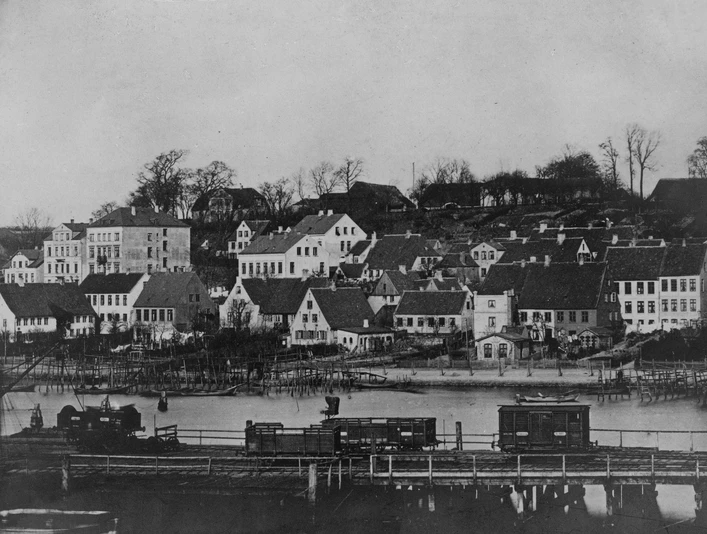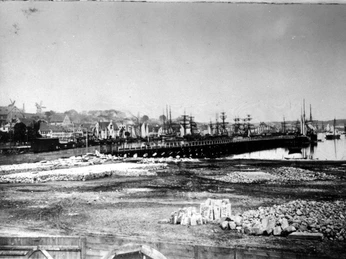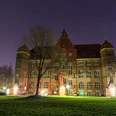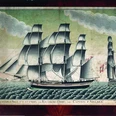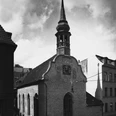Hafenspitze (Harbour Tip)
The innermost corner of the Flensburg Fjord, which extends about 35 kilometres from the Baltic Sea into the country, has been in use as a protected natural harbour for 800 years. In the Middle Ages, the original harbour tip was located about 500 metres further to the south and extended to today's Angelburger Straße below Johanniskiche (St. John's Church), Flensburg's settlement centre in the 12th century. Due to sediment and debris deposition, parts of this early harbour silted up and ships with a greater draught were soon no longer able to reach it. They had to unload their goods at the western part of the ship-bridge, Schiffbrücke.
Ships travelling in the west-east trade from Holland and England to Denmark, Sweden or Russia had to take a long, perilous route around Skagen and through the Danish Sounds, with high customs duties. Numerous ships were stranded and many seamen lost their lives.
In view of the many victims, an English railway company built a transit route from Tönning on the German west coast, across the country to east-coast Flensburg in 1853/54. From now on, the North Sea sailors could transfer their goods to the railways in Tönning, transport them by rail to Flensburg, and finally having them shipped on to Copenhagen, Stockholm, Helsingfors (Helsinki), St. Petersburg or Königsberg (Kaliningrad) on ships across the Baltic Sea. In order to make it possible to load deep-draught ships in Flensburg, the English built a 257 m long wooden bridge with rails into the harbour as an extension of the railway station they had built in 1854. The goods wagons were driven out to the top of the bridge; from here, the goods were transferred to the ships, docking at the pier.
The abolition of the Sund duty in 1857 reduced the income of the transit railway, but the "English Bridge" continued to serve until 1883. Weak of age and dilapidated, it was finally removed, and the inner eastern harbour basin was filled up to about the present water's edge.
Good to know
Openings
Nearby
